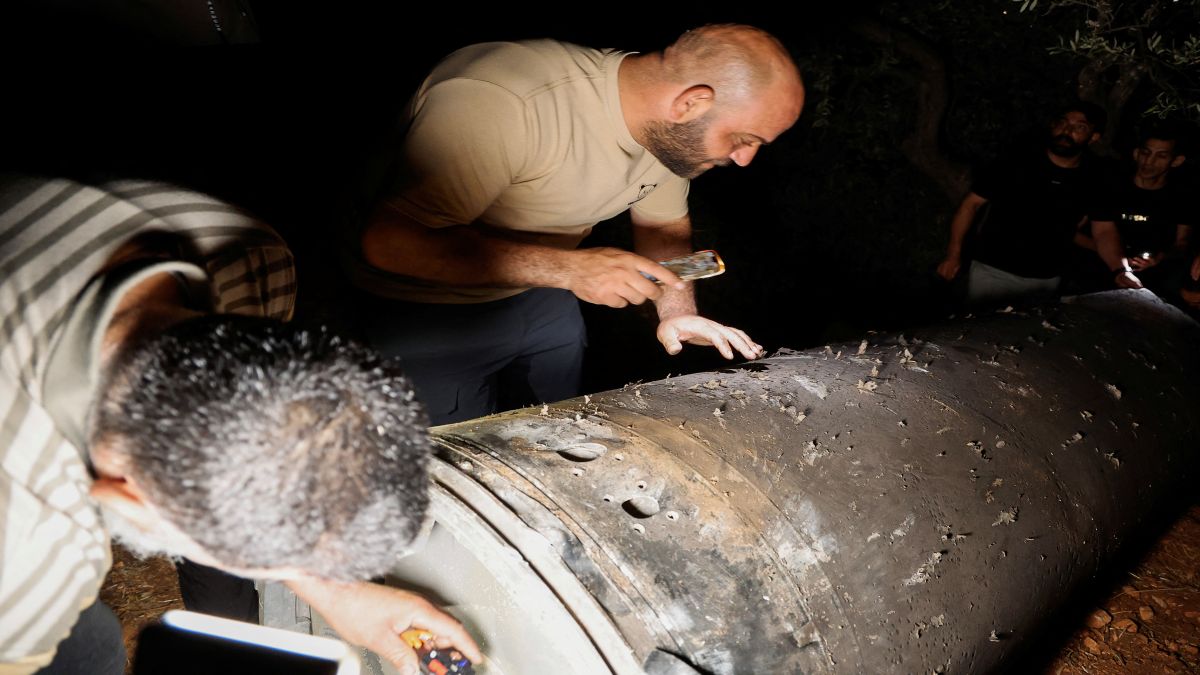People cowering, air raid sirens echoing loud… These scenes unfolded in Israel on Tuesday after Iran unleashed waves of ballistic missiles on Tuesday. Notably, this is the second attack by Iran this year, after it fired hundreds of missiles and drones at Israel in April.
Tuesday’s barrage of missiles , Iran’s Islamic Revolutionary Guard Corps (IRGC), said, was in response to deadly Israeli attacks against people in Gaza and Lebanon, as well as the assassinations of top IRGC, Hamas and Hezbollah leaders.
Israel, confirming the attack, said that a whopping 180 missiles were launched in this strike, but Israel’s Iron Dome , Arrow 2 and other air defences intercepted “a large number” of them. The Israeli military said only a “few” hits were recorded in central and southern parts of the country while two people were injured from falling shrapnel in the Tel Aviv area, according to Israel’s emergency service.
Soon after the attack, Israel’s Prime Minister Benjamin Netanyahu warned Tehran that it had made “a big mistake” and “will pay for it.”
But which missiles did Iran use in the attack, now dubbed Operation True Promise-II? We take a look.
Fattah-2 hypersonic missile
According to some reports and experts, Iran deployed the hypersonic Fattah-2 missile against Israel in Tuesday’s attack. Mehr news agency reported that this is the first time that Tehran has used the hypersonic missiles in an attack against Israel.
Fabian Hinz, a military expert at the International Institute for Strategic Studies in London, also told DW that he believed that Iran had used the Fattah-2 missile in its attack on Tuesday based on the remains of the launched missiles.
The Fattah-2 missile , a successor of the Fattah-1, was unveiled in November last year. The Fattah-2’s solid fuel booster carries a gliding warhead, creating a new classification in this field: Hypersonic Cruise Glide Vehicle (HCGV).
When unveiled, Iran’s Tasnim news agency reported that owing to the new engine, Fattah-2 can travel complex and unpredictable routes. Moreover, the liquid fuel engine has the ability to adjust the thrust force.
Experts believe that the Fattah-2 can hit targets within a range of 1,400 kilometres with a velocity of Mach 13 (about 16,000 km/h). However, The Jerusalem Post reported that the Fattah-II missile can touch a speed of Mach 20 (24,696 kilometres per hour).
Moreover, the Fattah-2 can make quick turns to avoid defence systems.
Previously, Iran had claimed that the Fattah-2 missile could evade even the most advanced anti-ballistic missile systems of the United States and Israel.
Shahab-3 missile
Weapons experts who have been analysing videos of the missile barrage from Iran noted that Tehran also deployed variants of its Shahab-3 ballistic missiles.
Variants of the Iranian Shahab-3 series ballistic missiles were used in the latest missile attack on Israel, weapons experts who analysed verified social media videos from the scene told CNN.
Trevor Ball, a former senior explosive ordnance technician for the US Army, was quoted as telling CNN that missile fragments from videos and images were consistent with the Shahab-3 variants such as Emad or Qader .
The Shahab-3, which is the foundation for all Iran’s medium-range ballistic missiles, entered service in 2003, can carry a warhead of 760 to 1,200 kilogrammes (1,675 to 2,645 pounds) and can be fired from mobile launchers as well as silos.
Defence experts note that given the Shahab-3’s payload capacity, it would likely be capable of delivering nuclear warheads. The Shahab-3 uses an engine that is similar to, but larger than that of the Scud missiles. The increased size allows for a significantly increased range without making the missile too large for Transporter-Erector-Launcher (TEL) basing.
Haj Qasem missile
According to an analysis by Fabian Hinz, a Berlin-based expert on Iran’s missile arsenal with the International Institute for Strategic Studies, Tehran deployed a mix of solid- and liquid-fueled missiles.
Among these was the ‘Haj Qasem’ missile, which is a medium-range ballistic missile (MRBM) developed by Iran, with a range of 1,400 kilometres and a warhead weight of 500 kilogrammes.
The missile was first displayed to the Iranian people in August 2020 and is named after the late Iranian commander Qasem Soleimani , who was assassinated by the United States in January 2020. Iranian commanders have said that the missile is capable of passing through missile defence systems and is designed to manoeuvre and hit targets without being detected.
Iran’s missile arsenal
A 2021 report from the Centre for Strategic and International Studies reveals that Tehran has hundreds of ballistic and cruise missiles with a variety of ranges. According to US Air Force General Kenneth McKenzie, Iran has over 3,000 ballistic missiles. Moreover, Iran continues to develop underground missile depots.
The Arms Control Association says Iran’s missile programme is largely based on North Korean and Russian designs and has benefited from Chinese assistance.
Following the missile strike and the subsequent warning from Netanyahu, Tehran has warned that it would launch further missiles at Tel Aviv if it retaliates.
With inputs from agencies


)

)
)
)
)
)
)
)
)



